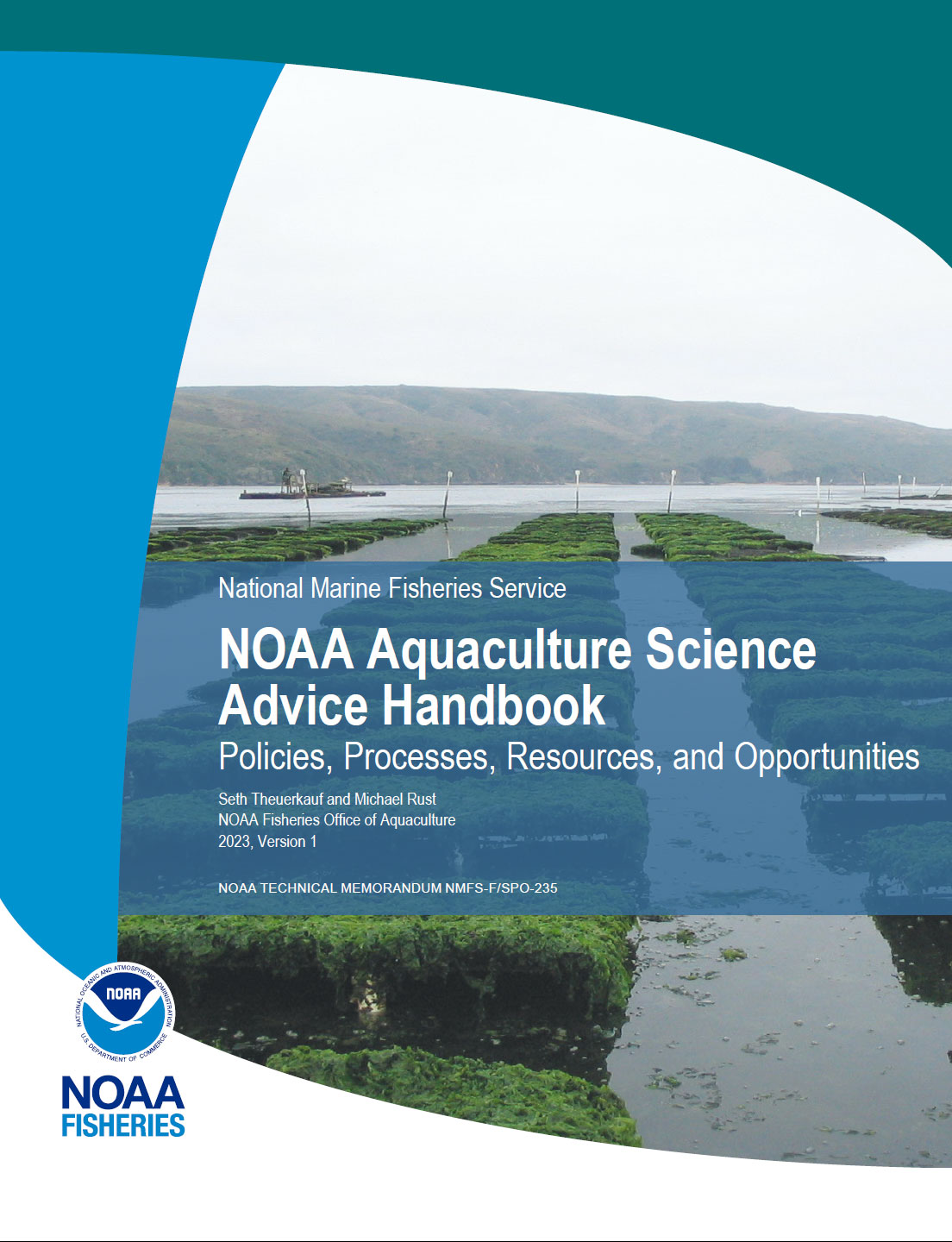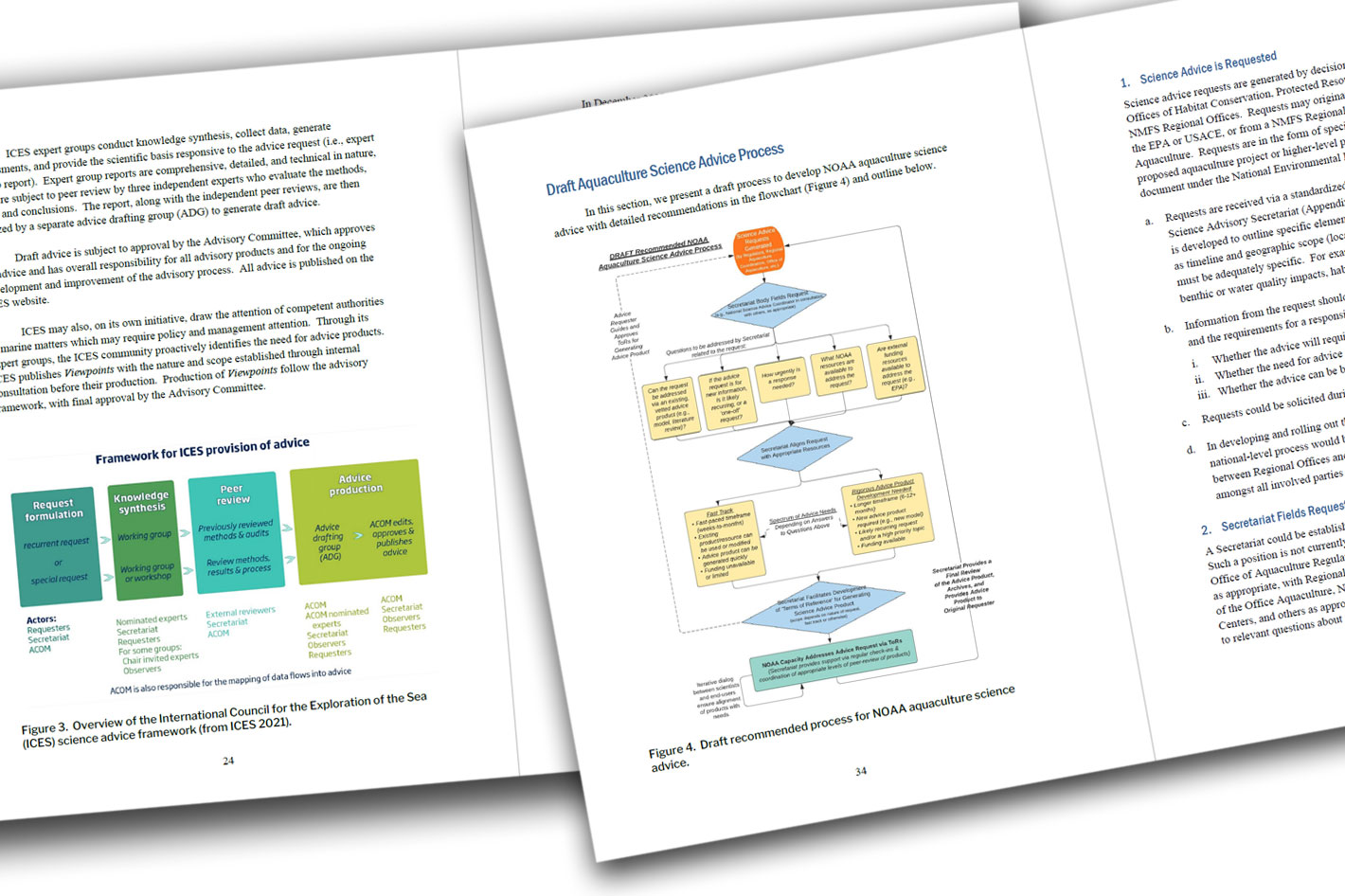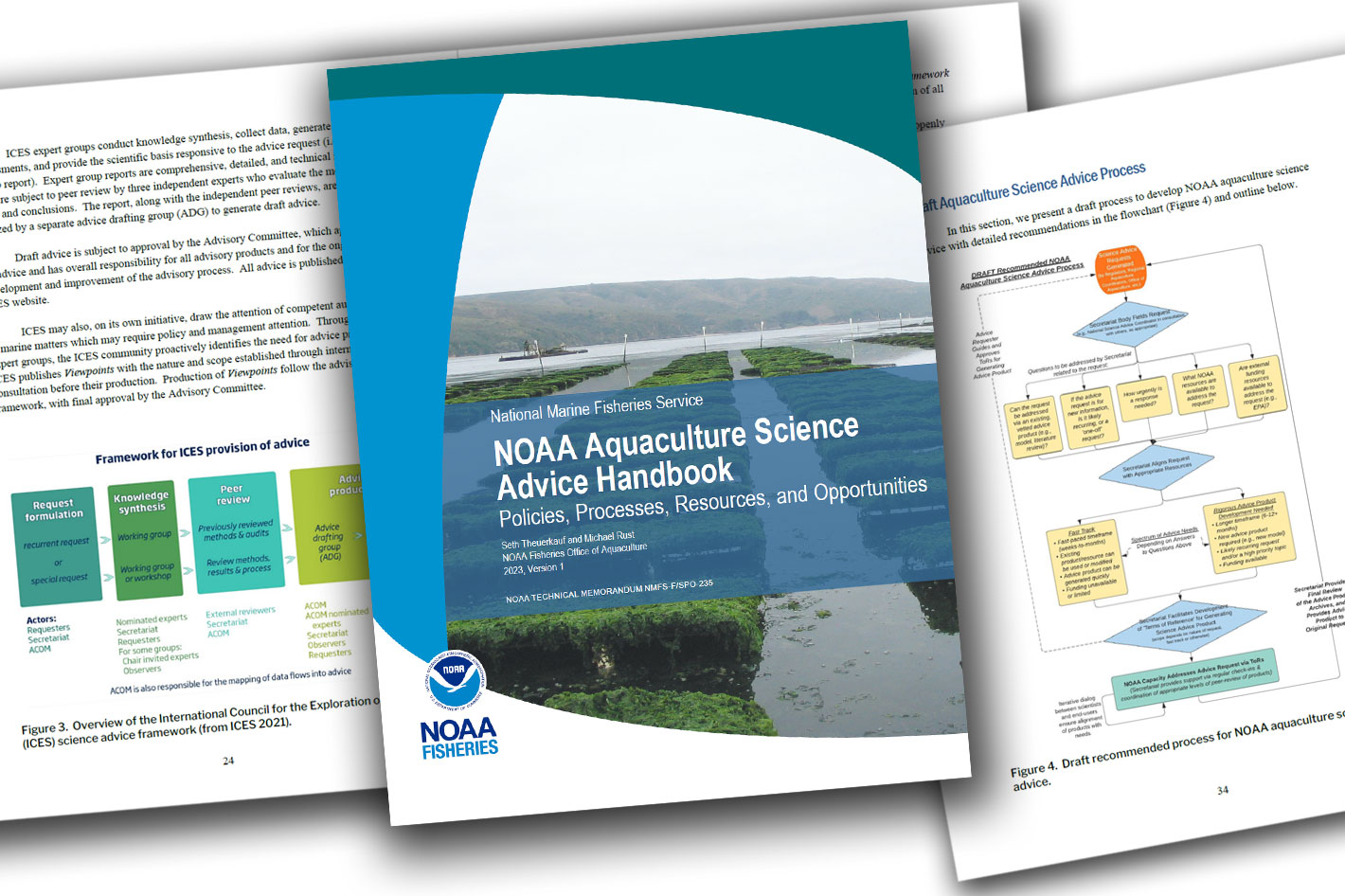There is a mounting interest in marine aquaculture – or farmed seafood – development in the United States, and now NOAA has published a new Aquaculture Science Advice Handbook.
Important for nutrition, for local jobs and for climate-ready food systems, aquaculture is growing in the United States, as more people is attracted to the potential it offers. For decades, aquaculture production was tiny, but it is growing lately for a series of reasons. One of them is climate change: as it creates numerous threats for fishermen, aquaculture offers a viable solution to keep working in the industry. Last February National Fisherman reported how in Maine, an idea imported from Japan is helping to diversify the seafood harvesting business.
 With millions of square miles of coastline and ocean access, U.S. is in a good position to expand its aquaculture production, as a growing community of aquaculture growers farm dozens of different species, including oysters, clams, mussels, shrimp and crayfish, as well as fish like trout, catfish, salmon, and even plants of seaweed like kelp.
With millions of square miles of coastline and ocean access, U.S. is in a good position to expand its aquaculture production, as a growing community of aquaculture growers farm dozens of different species, including oysters, clams, mussels, shrimp and crayfish, as well as fish like trout, catfish, salmon, and even plants of seaweed like kelp.
Now, NOAA has developed a new Aquaculture Science Advice Handbook. It’s a 54-page handbook in .PDF format that you can download to use as a guide for any question related to this segment of the industry. NOAA Fisheries Office of Aquaculture, responsible for the handbook says that “there is a mounting interest in marine aquaculture development in the United States” but “there is also a growing need to provide regulators with relevant and rigorously developed science advice to support and inform aquaculture management decisions.”
 Tools to translate science into action
Tools to translate science into action
According to the NOAA Fisheries Office of Aquaculture “Marine aquaculture operations provide a year-round source of high-quality jobs and economic opportunities in coastal communities that augment seasonal tourism and commercial fishing. Marine aquaculture is also a resource-efficient method of increasing and diversifying U.S. seafood production that can expand and stabilize U.S. seafood supply in the face of environmental change and economic uncertainty. Some marine aquaculture, such as shellfish and seaweed aquaculture, provides environmental benefits by removing excess nutrients from our waterways. Aquaculture is also used for species and habitat restoration, and is part of a strategy to recover NOAA priority species.”
The Aquaculture Science Advice Handbook now published as part of the NOAA Fisheries Office of Aquaculture strategy provides science advice to support and inform aquaculture management. It assesses aquaculture management policies, resources, and processes to provide a guide for developing science products. Science advice is quality-assured information, developed by scientists, that can be used by decision makers to make sound, science-based choices.
NOAA’s science advice products include:
- Expert consultations for aquaculture growers
- Summary reports for scientific workshops
- Reviews of scientific literature
The handbook includes science advice tools and models that can help translate science into action. Follow this link to download and read the Aquaculture Science Advice Handbook.







